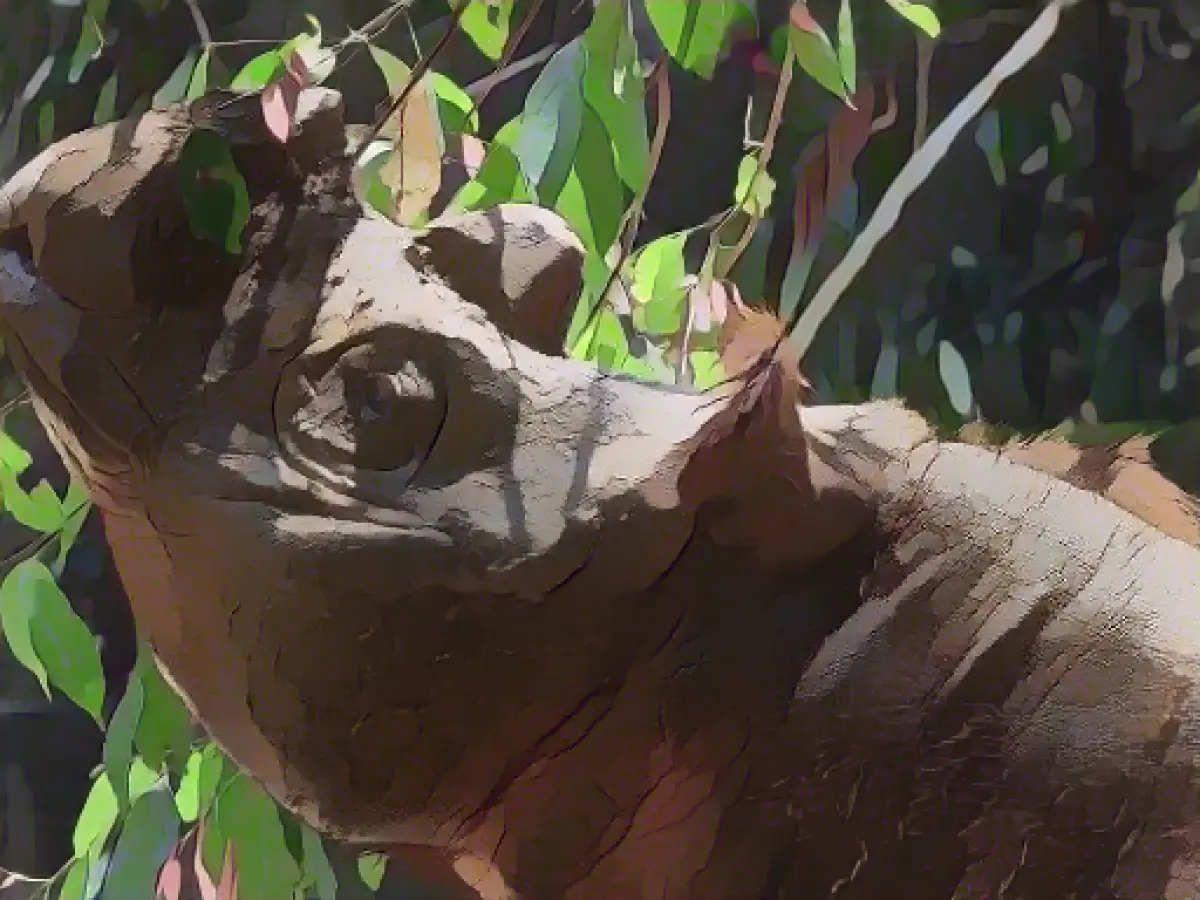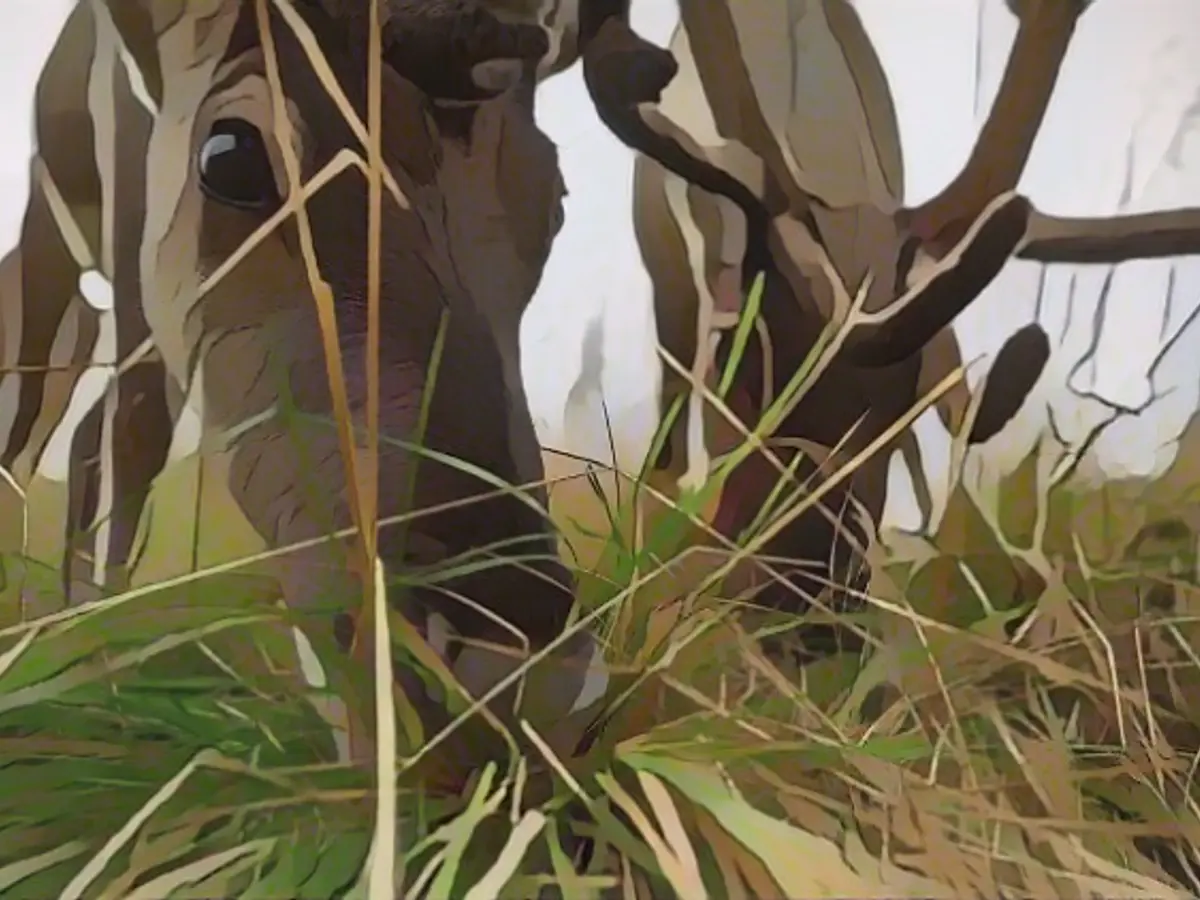A Rare Beacon of Hope: The Birth of a Sumatran Rhino Calf
In a moment of celebration for animal conservation, a baby Sumatran rhinoceros has made its entrance into the world in an Indonesian national park. The heartwarming event took place in Way Kambas National Park on the eastern side of Sumatra, as announced by the local environmental ministry. This is the second baby rhino born in the park this year, adding to the five rhinos born as part of a conservation program since 2012.
The baby boy, nicknamed the 'Mini Rhino,' arrived on a Saturday, marking the 460th day of its mother's pregnancy. Ten days earlier than the anticipated due date, the calf's early arrival has brought joy and renewed hope to conservationists worldwide. His parents are Delilah, a seven-year-old resident of the park, and Harapan, a bull who formerly resided at Cincinnati Zoo in the USA and has called Way Kambas home since 2015. The surprising fact is that no Sumatran rhinoceros has been documented outside of Indonesia since Harapan's arrival.
The Mini Rhino belongs to the smallest of the five rhino species worldwide, carrying a unique appeal with its hairy body, two horns, and a diverse vocal repertoire that includes squeaking, humming, and snorting. Once plentiful in Southeast Asia, the Sumatran rhinoceros population has tragically dwindled to around 80 individuals today due to hunting and habitat destruction.
"A sight so rare that few have witnessed it coming to life in its natural habitat" - emphasizes the Sumatran Rhino Alliance, a collective of organizations including the Indonesian government, WWF, IUCN, and the International Rhino Foundation. The birth of the Sumatran rhino calf is a massive victory in the field of conservation and an essential step towards protecting this critically endangered species.
The conservation program in Way Kambas National Park has displayed remarkable achievements in preserving the Sumatran rhinoceros population. Efforts include captive breeding, population management, conservation initiatives, habitat expansion, and local community engagement. Despite these efforts, the species remains on the brink of extinction due to habitat fragmentation, reproductive challenges, genetic deterioration, and consistent poaching threats.
A beacon of hope, the Mini Rhino and his predecessors born in Way Kambas contribute to preserving the existence of Sumatran rhinoceroses in their native land of Sumatra. This remarkable event highlights the importance of continued conservation efforts worldwide to protect some of the rarest species on earth.
Enrichment Data (Integrated sparingly into article):
The Sumatran Rhino Sanctuary in Way Kambas National Park has met with success in conserving this precious species. Key accomplishments include:
- Captive breeding (since 2012):
- Four live births in captivity, including the recent one in 2023
- Population management (since 2012):
- Ensuring the welfare of eight captive individuals, aiming to increase survival rates
- Conservation initiatives (Sumatran Rhino Rescue program):
- Collaborative efforts to locate wild rhinos and relocate them to secure breeding facilities
- Habitat expansion (Javan Rhino Study and Conservation Area):
- Creation of a new 5,000-hectare area for protection and rhino habitation
- Community engagement (the International Rhino Foundation):
- Employing more than 150 local community members for infrastructure building and protection, financing conservation efforts with revenue from rhino tourism
Although these conservation efforts are significant, the survival of the Sumatran rhinoceros is still uncertain due to various threats, such as habitat loss, reproductive challenges, genetic deterioration, and poaching.






